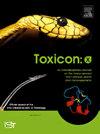方法:海葵毒液提取工艺的比较
IF 2.8
Q2 TOXICOLOGY
引用次数: 0
摘要
对刺胞动物(珊瑚、海葵和水母)毒液的研究提供了重要的进化和生态见解,并为新化合物的生物发现提供了巨大的机会。该领域的成功不仅取决于获得足够数量的毒液,而且取决于在物种和研究之间比较毒液的能力。迄今为止,尚未对获取海葵毒液的主要技术进行直接比较,以确定这些方法在刺胞动物毒液装置-刺胞科中产生毒液的可比性或有效性。本研究旨在比较三种常用的方法:分离刺胞、电刺激和物理处理从海葵中提取的毒液。使用一系列非靶向蛋白质组学和质谱技术,我们发现每种方法在提取方法中检测到的成分的组成和丰度上都存在明显差异。此外,每种提取方法之间所识别的成分很少共享。这些结果表明,不同的毒液收集方法产生的结果截然不同。虽然需要进一步的调查,以验证每个样本中每种成分的来源,但我们认为,从分离的刺胞虫中收集的样本可能是最具代表性的真实毒液成分。本文章由计算机程序翻译,如有差异,请以英文原文为准。

Methods matter: Comparison of techniques used for sea anemone venom extraction
The study of cnidarian (coral, sea anemone, and jellyfish) venom provides important evolutionary and ecological insights and unlocks vast opportunities for biodiscovery of novel compounds. The success of the field is dependent on not only the acquisition of sufficient quantities of venom but also the ability to compare venom between species and studies. To date, no direct comparison of the main techniques used to acquire sea anemone venom has been performed to determine the comparability or validity of these methods to yield venom derived from within cnidarian venom apparatus – cnidae. This study aims to compare the venom extracted from a sea anemone via three common methods: isolated cnidae, electrostimulation, and physical manipulation. Using a range of non-targeted proteomic and mass spectrometric techniques, we showed each method yielded distinct differences in both the composition and abundance of components detected for extraction method. Furthermore, few identified components were shared between each of the extraction methods. These results highlight that different venom collection methods yield vastly different results. While further investigation is required, to validate the source of each of the components from within each sample, we argue that sample collection from isolated cnidae is likely to be the most representative of true venom components.
求助全文
通过发布文献求助,成功后即可免费获取论文全文。
去求助
来源期刊

Toxicon: X
Pharmacology, Toxicology and Pharmaceutics-Toxicology
CiteScore
6.50
自引率
0.00%
发文量
33
审稿时长
14 weeks
 求助内容:
求助内容: 应助结果提醒方式:
应助结果提醒方式:


